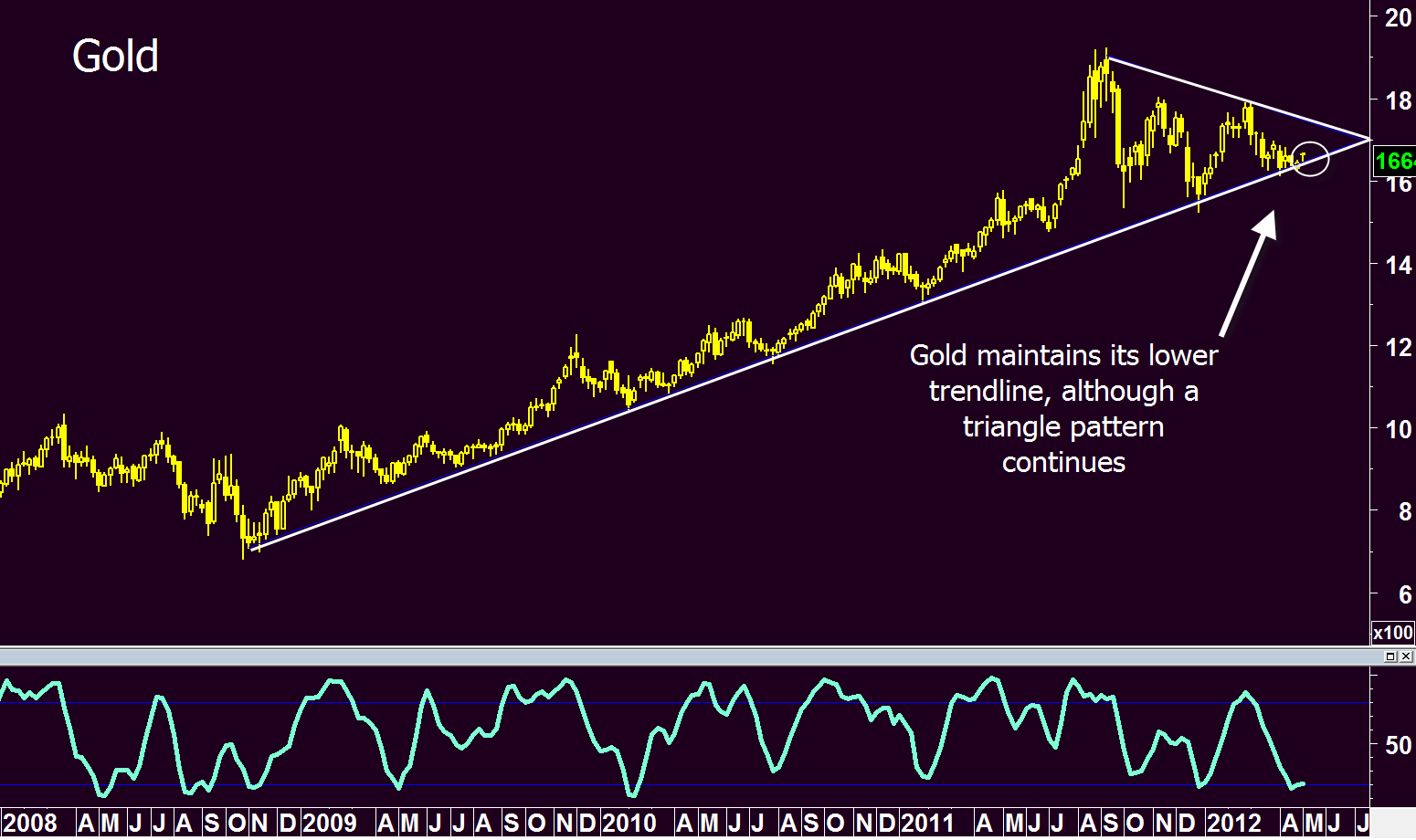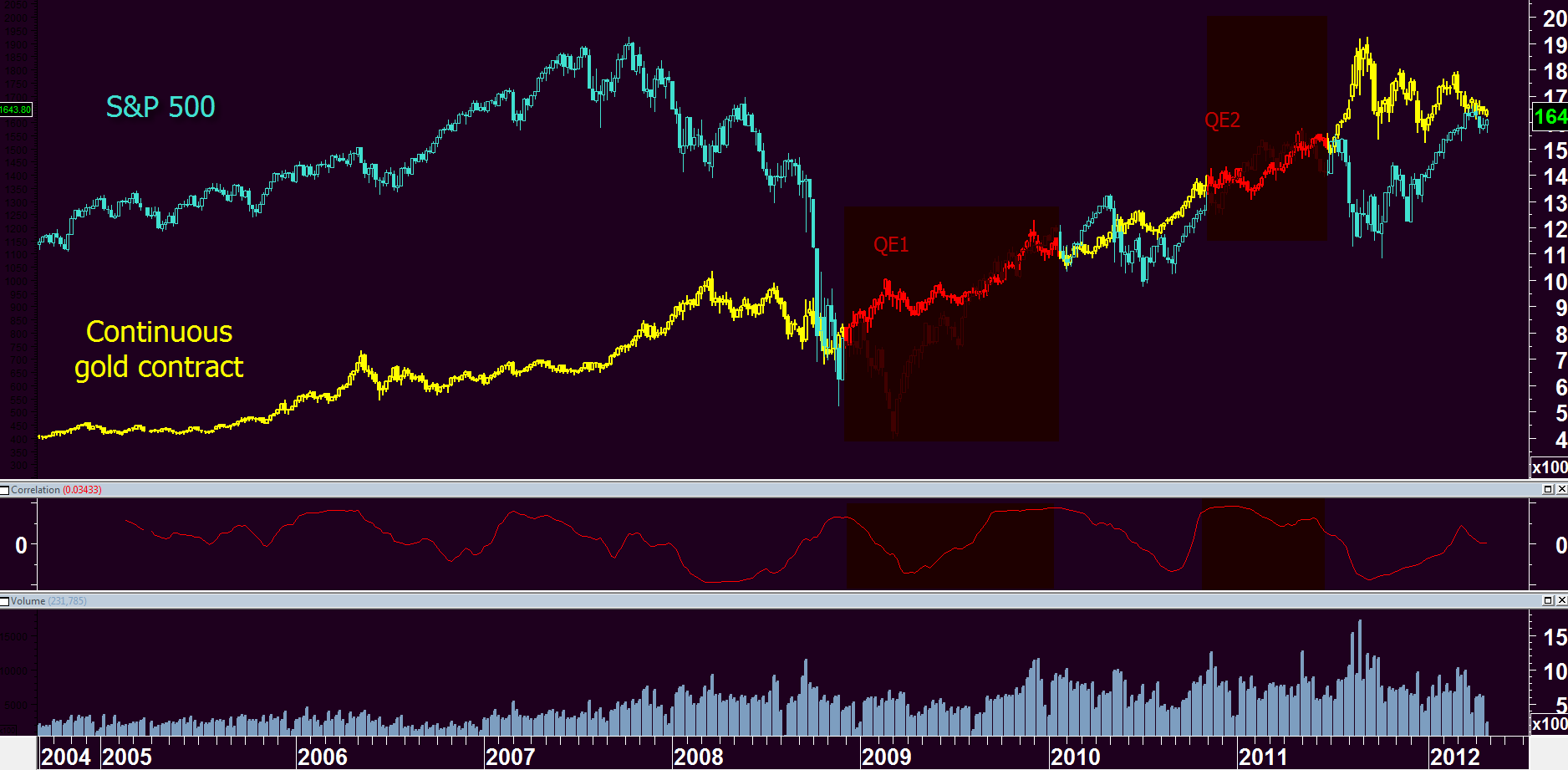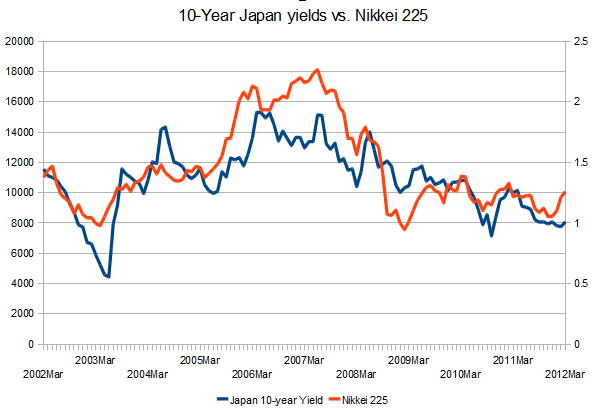by Michael Tarsala, CMT
The price of gold may be a “risk-on” market indicator for the rest of 2012, having potential implications for equities – not just commodities.
After roughly tripling off the 2008 lows, gold is now appears to be stuck in neutral and primed for the next big move to either the upside or downside.

Source: MetaStock
As you can see, it’s tested so far held the bottom of a long trendline this week. The stochastics in blue at the bottom of the chart also indicate an oversold level. Market technicians might interpret that as a near-term positive for gold bulls.
Yet there’s also downside trendline pressure, forming a triangle pattern in the charts dating to the September highs. It is a classic technical pattern that reflects indecision on the part of market participants. Consider it a tug of war, with neither the bulls nor the bears winning in the big picture.
Uncertainty reigns
One of the biggest reasons gold is still stuck in neutral is continued uncertainty surrounding whether or not the Fed will institute a third round of quantitative easing.
Far better economic numbers – especially relative to expectations – in the second half of 2011 began to raise doubts that yet another round of easing was necessary, which started the pattern. It’s continued in an ever-tightening range ever since.
As you may recall, the past two rounds of quantitative easing ignited very strong rallies in markets tied to inflation – in addition to oil, that includes gold and equities.

Source: MetaStock
What happened before
The chart above shows both the S&P 500 and gold during the QE1 and QE2 periods. Each was among the most significant rallies going back more than a half-decade. Gold prices rose 47% during QE1, while the S&P rose 38%. And during QE2, gold and the S&P rose nearly in lockstep, up 20% and 24%, respectively.
It’s worth noting that QE1 and QE2 were very different from each other. The first time around, the Fed was buying a cornucopia of instruments including asset-backed securities. The second time around, it centered its activities strictly on Treasuries.
The second round of QE is the one to study, because the Fed is unlikely to focus on buying illiquid bank assets again the way it did in the first easing round.
And the key takeaway for the equity investor is that gold and the S&P 500 were moving up together during the QE2 period.
A link between gold and stocks
Using EidoSearch software, I measured a correlation coefficient of 0.67 from November 2010 to the end of June 2011. It is a statistically significant correlation, and one that likely served to strengthen the bond between gold and stocks over the past three years.
Today, the rolling correlation of gold and the S&P 500 stands near zero. That’s because gold has moved sideways in its triangle pattern since October of last year, while equities have risen nearly 30%.
Simply put, U.S. stocks have overcome increased systemic risk worries emanating from Europe. Gold has not moved higher despite them.
So what happens next?
It appears that a move out of the gold triangle could be in store later this year.
The simplicity of any triangle is that it can be expected to end in either a breakdown or a breakout within a finite period of time, as prices reach the apex of the pattern. The longer the sideways trading continues, the more “coiled” the price action becomes. The potential move simply gains more power as the range of the sideways price movement continues to narrow.
And here’s why you, a stock investor should care:
- A breakout of gold may give early cues as to market expectations for more QE. If QE3 does happen, it could be a positive for equity markets.
- In the near-term, gold holding the bottom of the pattern could also provide a slight benefit to gold stocks, which themselves recently received an improving breadth signal.
- Given the recent correlation history between gold and stocks, a breakdown of gold in the triangle could be perceived as a negative influence for stock markets.



